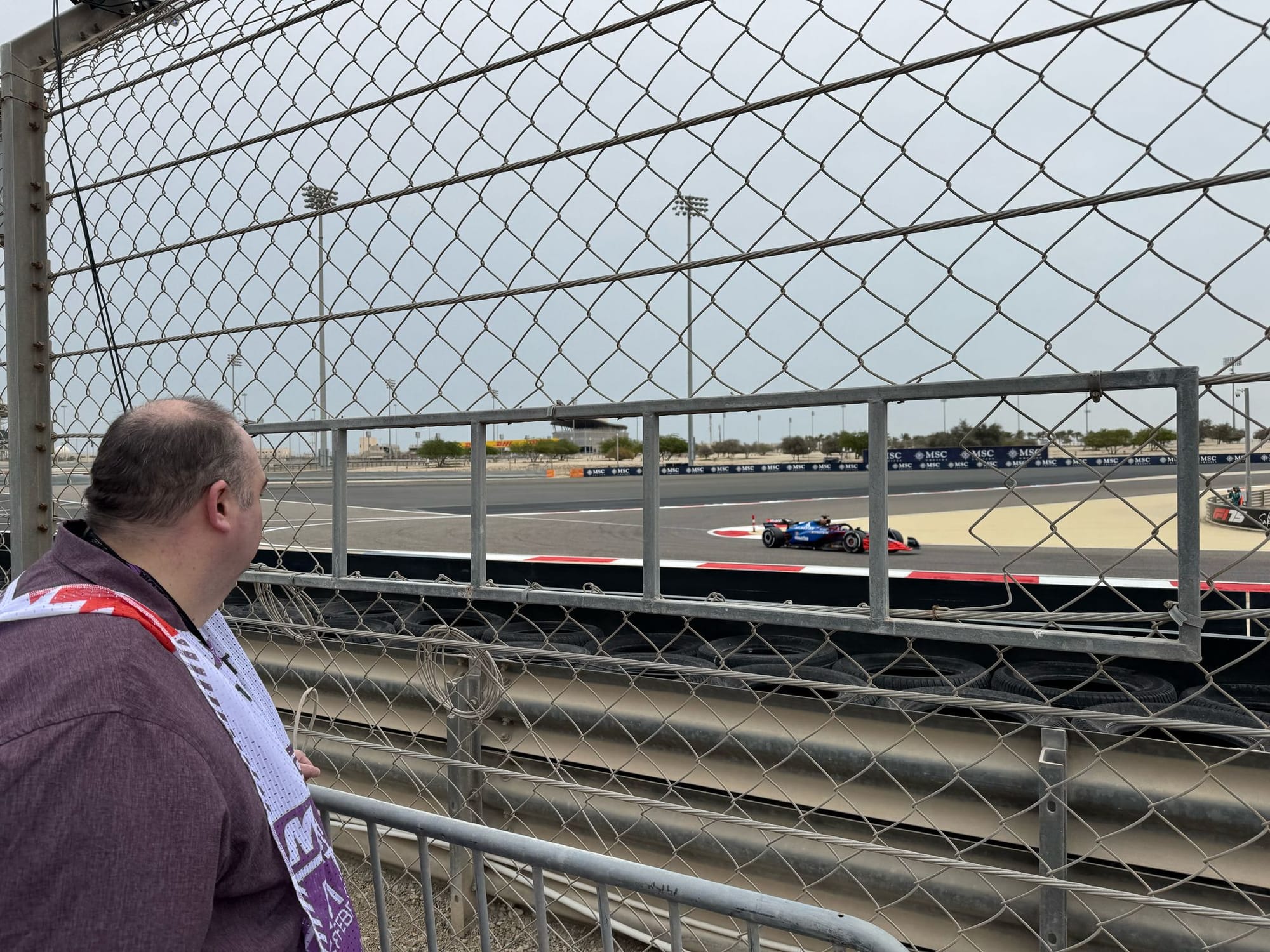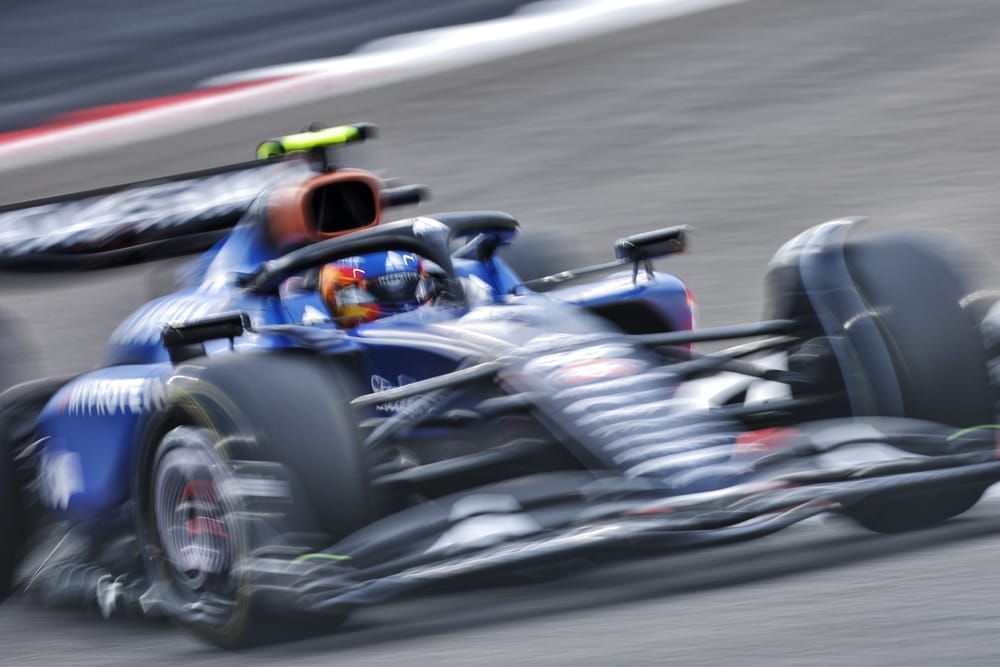The Williams isn’t the fastest car in Bahrain, despite Carlos Sainz topping the timesheets on the second day of Formula 1 testing, but judged from trackside it is the most improved car and the standout of the expected midfield group.
With all the usual caveats of the limited perspective of watching from one corner at a time scattered across two days, the Williams has caught my eye throughout.
Yesterday, it looked quick but a little tricky with both Alex Albon and Carlos Sainz having to take corrective action more than they would have liked. But crucially, it looked quick and responsive. That impression only strengthened on the second day, on the long runs with one of the most consistent cars in terms of balance.

In summary, it’s a car that fundamentally is working well, but perhaps occasionally catches the drivers out. My colleague at The Race, Scott Mitchell-Malm, put that impression, which he shared, to Albon earlier today.
“Yeah, I would say you've summarised it pretty well,” said Albon. “We know the areas we need to work on, there’s just some new things – new software, new areas to focus on, which has changed a little bit the balance of the car, as you can see.
“Just as a general feeling, the car’s in a much better position than last year, but there are some areas where we’re just getting caught out a little bit. [It’s] nothing we can’t fix. We made some changes last night, to today, which has made a step. It hasn’t solved everything completely, so there’s still some work to do. Maybe during lunch, but more likely overnight. But so far, we’re in a reasonable place.”
There's never been a better time to join The Race Members' Club on Patreon - where you can get plenty more Edd Straw plus the chance to ask him questions on ad-free episodes of The Race F1 Podcast. Sign up now and get 90% off your first month.
Early on, the Williams appeared to react to bumps, or to be more precise, certain compressions on the straights, more than others, but it settled more quickly than some of its rivals. But at the entry to the medium and low speed corners there were times where rear instability forced an adjustment and compromised the entry to the corner.
That improved on Thursday, to the point where on the race run the car looked metronomic. Now, there is the question mark of fuel loads and certainly Williams has at times run lighter than the frontrunners at least, and likely at least some of its midfield rivals, but even so the car looks user friendly - albeit with that edge waiting to catch the unwary driver out.
More from testing day two
Read: Mark Hughes's race pace analysis
Read: Lewis Hamilton's early Ferrari verdict
Read: Gary Anderson on Mercedes experiments
Read: McLaren's early 2025 car weakness
Comparing the Williams to its ‘natural’ enemies, the midfield, and the contrast is clear. The Alpine is brisk, but a little disconnected, with the same applying to the Racing Bulls car. The Haas is relatively consistent, but can be limited by understeer, while the Aston Martin probably looks the most useable but with question marks over its pace overall.
As for the Sauber, it’s by some margin the least consistent car and appears to give the drivers the least confidence.
That whistlestop overview of the midfield pack is very much a provisional one as the only thing we can be certain of is that the laptime spread will be tight - far closer than the error bars created by the various factors impacting pace in testing - but the picture is encouraging for Williams.
This is nothing more than a snapshot, or rather a blend of snapshots, based on viewing the cars at various points around the circuit over the past two days.
But the impression is that while Williams’s place on top of the times is an illusion, in the battle to be at the head of Class B and push up closer to the leading quartet, it seems to be in the best shape. And if the team can dial out the vice, it could prove a very potent weapon in 2025.



